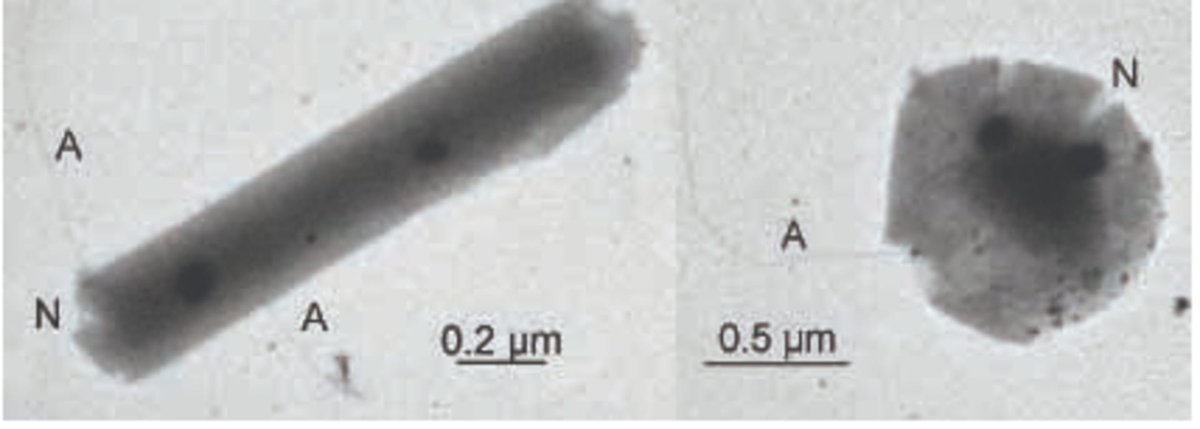
Next up, and new thread - we have the ARCHAEAL DIVISION! First from this Domain are Methanoregula and Methanosarcina, two methanogenic compatriots who will be battling in the SURFACE OCEAN.
The ocean surface is covered in a thin biofilm dominated by photosynthetic algae and cyanobacteria. This oxic, high-light environment is responsible for more than half of the oxygen production on the planet.
Too bad both of our methanogens are strict anaerobes!
Too bad both of our methanogens are strict anaerobes!
Methanosarcina is a heavyweight - large cells which grow in clusters of fours. Methanoregula, in comparison, are small simple rods.
genome.jgi.doe.gov/portal/metbo/m…

genome.jgi.doe.gov/portal/metbo/m…


Size won't help here, and neither will any of the other differences between these two. Both are very poorly adapted to open ocean, and neither would survive for long. The class has spoken, and with a large majority vote, Methanosarcina is saved! METHANOSARCINA ADVANCES.
Battle #2 for the ARCHAEA pits two relatively recently discovered Archaea against each other: Lokiarchaeota versus ANME archaea. These two will be battling in SOIL.
Lokiarchaeota were first identified at Loki's Castle, a deep sea hydrothermal vent off the coast of Norway. Since then, the Asgard Archaea lineage (named for deities in the Norse mythology) has expanded to many radiations. nature.com/articles/d4158…
Lokiarchaeota ushered in a new understanding of how complex cells, the Eukaryotes, evolved. They are hugely important for our understanding of the evolution of life on earth. But are these deep-sea, hyperthermophilic organisms found in soil?
The answer is... Maybe? A survey of dryland and wetland agricultural environments detected Lokiarchaeota at very very low abundances. But they were detected! microbiomejournal.biomedcentral.com/articles/10.11…
We'll take it as enough evidence for Lokiarchaeota to persist for this battle...barely.
We'll take it as enough evidence for Lokiarchaeota to persist for this battle...barely.
The ANME archaea stand for ANaerobic MEthanotrophs - they are archaea closely related to methanogens like past combatants Methanosarcina and Methanoregula, BUT they primarily consume methane rather than produce it, using the same pathway, but in reverse!
In coastal wetlands, ANME archaea were found in the layers directly above methanogens - the first to gain access to methane and consume it, while aerobic methanotrophs were found higher up, where the oxygen and methane interfaces met.
sciencedirect.com/science/articl…
sciencedirect.com/science/articl…

Like Lokiarchaeota, ANME archaea are obligate anaerobes but unlike Lokiarchaeota, ANME archaea are frequently identified in soils of different kinds.
ANME are better adapted to soil, and also squeaked a narrow victory in the vote. With 52% of the vote, ANME ARCHAEA ADVANCE!
ANME are better adapted to soil, and also squeaked a narrow victory in the vote. With 52% of the vote, ANME ARCHAEA ADVANCE!
Our third ARCHAEAL DIVISION battle is between Haloquadratum and Sulfolobus, two classic examples of archaeal extremophiles. These highly adapted organisms will be battling well away from their respective extremes, at the OCEAN SURFACE.
Haloquadratrum is a charismatic square-shaped archaeon found in brine pools and other hypersaline environments. It uses bacteriorhodopsin to capture light energy, a protein that causes the characteristic pink colour in brine ponds.
mdpi.com/2075-1729/6/2/…

mdpi.com/2075-1729/6/2/…


Sulfolobus is acidophilic and thermophilic, growing in acidic hot springs. It's unique, harsh environment has led to evolution of interesting adaptations - many Sulfolobus enzymes are being characterized for industry pipelines. frontiersin.org/articles/10.33… 

The trouble with being highly adapted to an extreme environment is that that usually makes it tough to survive under more moderate conditions. Neither of these organisms would survive in the open ocean.
Haloquadratum could colonize a tide pool that has dried up to the point of concentrating the salt to brine or hypersaline conditions, but that's a pretty big stretch. It comes down to the vote, and with a tiny 2% margin of victory, HALOQUADRATUM ADVANCES!
Our final ARCHAEAL DIVISION battle is between Nitrosarchaeum koreense and Hadesarchaeum tengchongensis, who will be battling in the HUMAN GUT.
Archaea are not abundant denizens on humans. Archaea on your skin vary with your age, and are thought to lower the pH, protecting you from pathogens. newscenter.lbl.gov/2017/06/29/wha….
In the gut, archaea haven't been studied as deeply as bacteria. One study found ~half of all people had archaea in their guts, and when archaea were found, they were often at ~10% total abundance, made up mostly of Halobacteria and methanogens. microbiomejournal.biomedcentral.com/articles/10.11…
Nitrosarchaeaum koreense was originally identified from agricultural soil. It's an aerobic, mesophilic ammonia oxidizer and is not going to be comfortable in the anoxic gut. In fact, Dr. Hug could find no evidence for Nitrosarchaeum in the gut at all!
pubmed.ncbi.nlm.nih.gov/30124400/
pubmed.ncbi.nlm.nih.gov/30124400/
Hadesarchaeum tengchongensis was originally found deep in a South African gold mine, and has since been seen in hot springs and deep mud. It's possible they would survive the human gut, but there's no evidence any have taken up residence in a human.
medindia.net/news/new-class…
medindia.net/news/new-class…
Neither organism is having fun dancing in your digestive system, so it comes down to the votes - with 84% of the vote NITROSARCHAEUM KOREENSE ADVANCES! Team Nitrosarchaeum rallied a strong vote for their champion!
• • •
Missing some Tweet in this thread? You can try to
force a refresh






